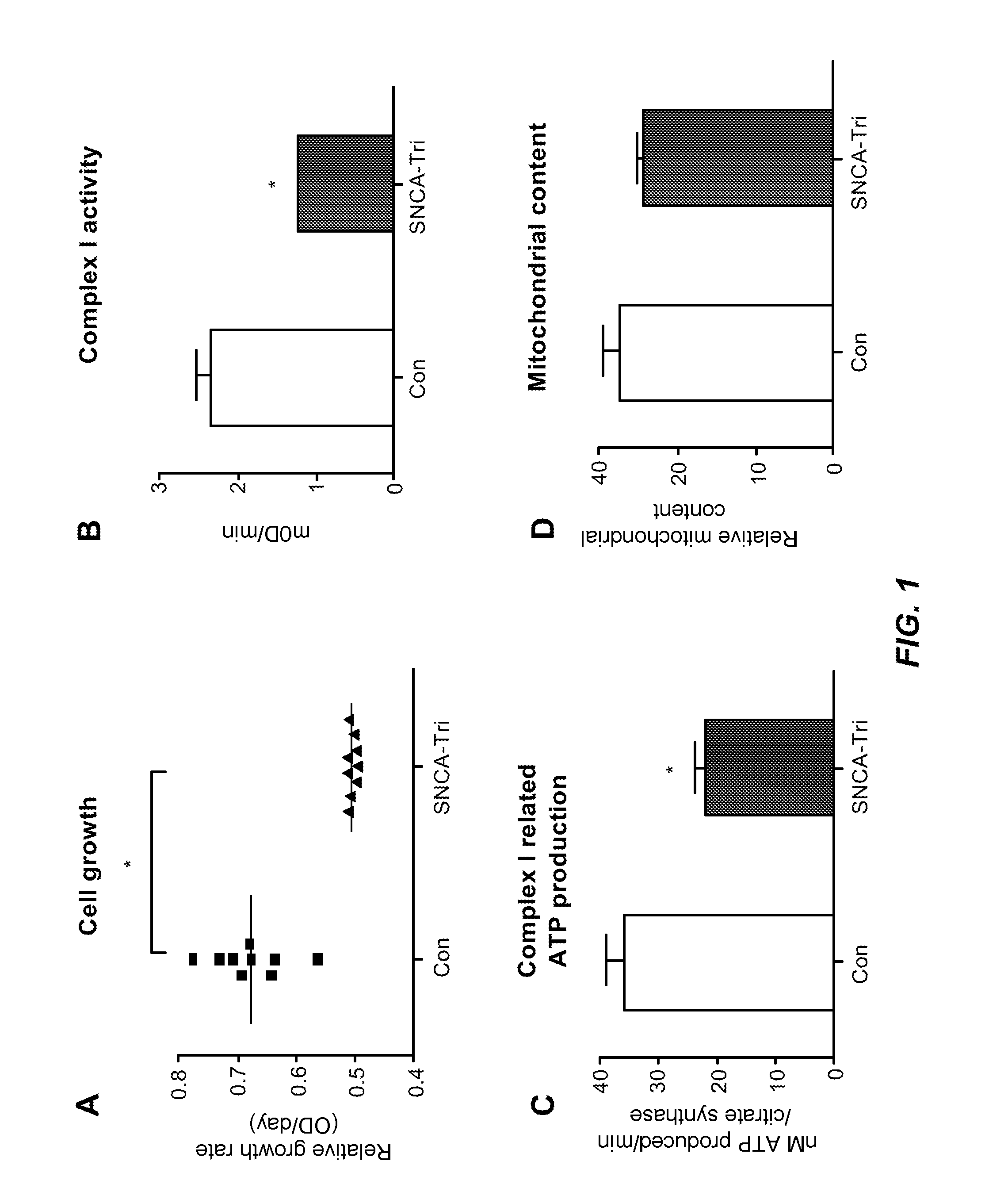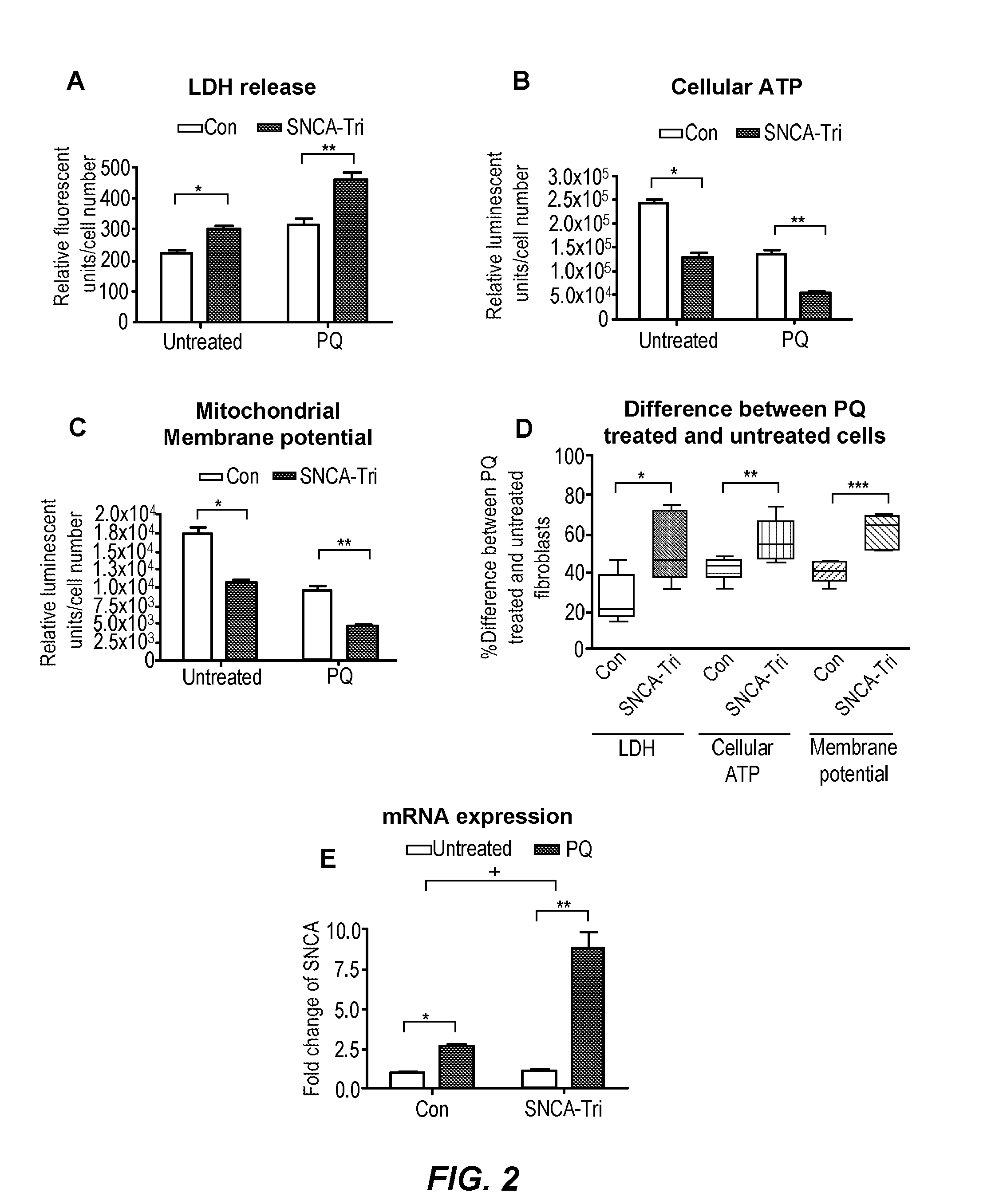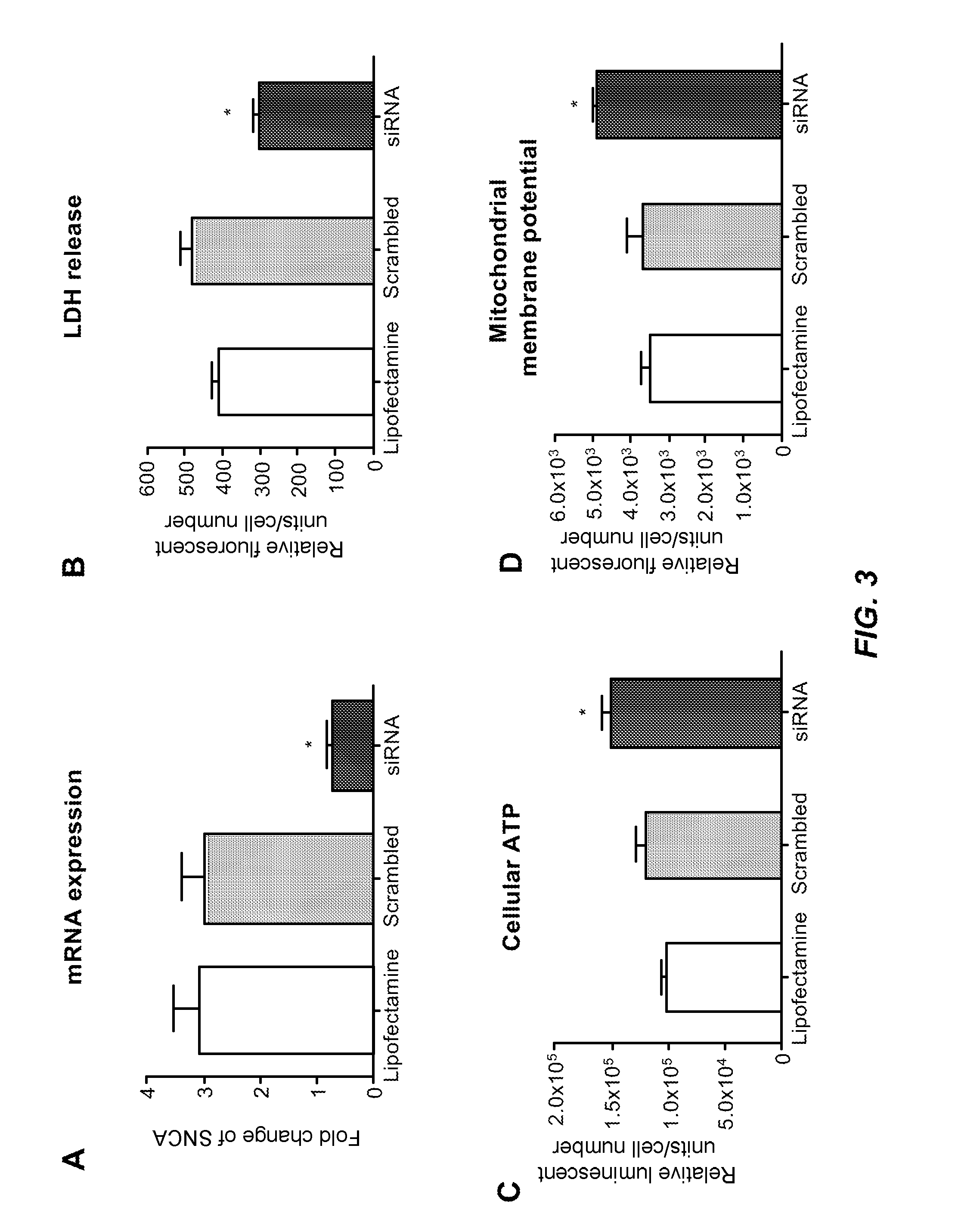Compositions and methods for high-throughput screening in skin fibroblasts with an alpha-synuclein triplication
- Summary
- Abstract
- Description
- Claims
- Application Information
AI Technical Summary
Benefits of technology
Problems solved by technology
Method used
Image
Examples
example 1
SNCA Triplication Fibroblasts Under Naive Growth Conditions
[0090]Fibroblast cultures of human test subject with an SNCA triplication (SNCA-Tri) demonstrated a 24% decrease in cell proliferation rate compared to matched healthy control subjects (Con) (FIG. 1A). Owing to the slow growth rate of the SNCA-Tri fibroblasts, whether or not mitochondrial function would be impacted was investigated. Kinetic assessment of the activity of Complex I in cell extracts showed that Complex I activity was 49% lower in the SNCA-Tri cells compared to controls (FIG. 1B).
[0091]The Complex I deficiency was associated with impaired mitochondrial ATP production. ATP synthesis was diminished by 39% after specific substrates (pyruvate and malate) for Complex I (FIG. 1C) in the SNCA-Tri fibroblasts. These findings suggest impairment of mitochondrial function and not a decrease in number of mitochondria, since the ratio of mitochondrial DNA / nuclear DNA did not show a significant difference in the control and t...
example 2
Increased Susceptibility to Oxidative Stress of SNCA-Tri Fibroblasts after Paraquat Exposure
[0092]To examine the relationship between mitochondrial dysfunction and oxidative stress, the test-subject SNCA-Tri fibroblasts were tested for susceptibility to oxidative stress compared to control fibroblasts. In these experiments, the cells were exposed to 300 uM of the herbicide paraquat (PQ) for 48 hrs. Cell viability and cell membrane damage were tested using lactate dehydrogenase (LDH) release. Under naive conditions, the SNCA-Tri fibroblasts already showed a slight increase of 33% in LDH release compared to controls 24 hrs after plating. When the cells were treated with PQ, cell viability in SNCA-Tri fibroblasts was greatly affected. Cellular LDH release showed 46% increase after PQ treatment in cells from the SNCA-Tri carrier compared to controls (FIG. 2A). In control fibroblasts compared to SNCA-Tri cells, significant reduction of mitochondrial membrane potential and cellular ATP we...
example 3
Phenotype of Fibroblasts with an SNCA Triplication
[0098]Without wishing to be hound by theory, mitochondrial impairment may be one of the major disease-associated mechanisms in the etiology of neurodegeneration and Parkinson's disease (PD). Several mitochondrial toxins, such as MPTP or rotenone, inhibit Complex I activity and cause nigrostriatal cell death, which has been utilized in modeling PD in vivo and in vitro. These toxicological models of PD show an increase in α-syn expression and / or an α-syn accumulation.
[0099]In humans, a reduction of Complex I activity has been reported in different tissues and brain areas of patients with PD, such as SN and the frontal cortex.
[0100]The data herein from peripheral skin fibroblasts from an SNCA triplication carrier support the mechanism of a systemic decrease in mitochondrial function in idiopathic PD, thus demonstrating a cellular phenotype for PD.
[0101]In addition, fibroblasts exposed to 300 uM PQ and measured after 48 hours and showed ...
PUM
| Property | Measurement | Unit |
|---|---|---|
| Fraction | aaaaa | aaaaa |
| Fraction | aaaaa | aaaaa |
| Fraction | aaaaa | aaaaa |
Abstract
Description
Claims
Application Information
 Login to View More
Login to View More - R&D Engineer
- R&D Manager
- IP Professional
- Industry Leading Data Capabilities
- Powerful AI technology
- Patent DNA Extraction
Browse by: Latest US Patents, China's latest patents, Technical Efficacy Thesaurus, Application Domain, Technology Topic, Popular Technical Reports.
© 2024 PatSnap. All rights reserved.Legal|Privacy policy|Modern Slavery Act Transparency Statement|Sitemap|About US| Contact US: help@patsnap.com










